What's New
Displaying results 1771 - 1780 of 4052
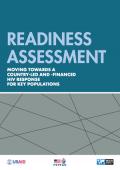
Resource | Guidelines,
This guide is designed to assess the ability of a country’s stakeholders (including government, development partners, and civil society) to lead and sustain HIV epidemic control among key poulations (KPs) as donors transition to different levels and types of funding. The guide is a flexible tool that assesses readiness across four domains and focuses on the specific vulnerabilities of KPs.

Resource | Reviews and Snapshots,
Over the past three decades, historic progress has transformed HIV from a deadly disease to a chronic condition. Critical milestones have been reached towards universal access: more than 17 million people globally are receiving HIV treatment, and the world is on track to eliminate mother to child transmission of HIV.
Working together, UNAIDS and the Global Fund have made global health history. The Global Fund helps ensure that the policies and directions charted by UNAIDS are fully resourced, while UNAIDS optimizes the impact of Global Fund grants.
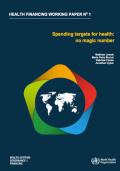
Resource | Publications,
In the context of discussions on health spending targets, this paper analyses not only how much countries spend on health, but how the performance in terms of universal health coverage (UHC) relative to that spending. The paper highlights the limited use of spending targets to inform country policy dialogue and decision making.
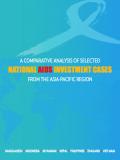
Resource | Publications,
This report is the outcome of a comparative analysis of seven national investment cases from the region and highlights key findings and recommendations for further action. The findings from this report and the Regional Expert Consultation on Developing Evidence-Based National HIV Investment Cases and Sustainability Plans held in December 2015 are expected to contribute to the knowledge base on how the ESCAP Member States have developed national investment cases (NICs), and identify examples of best practice. The analysis was based primarily on a desk review of the investment cases of Bangladesh, Indonesia, Myanmar, Nepal (Investment Plan), the Philippines, Thailand, and Viet Nam, with additional input from in-country respondents and the Regional Expert Consultation.
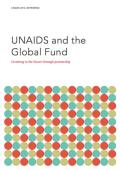
Resource | Publications,
The global commitment to ending the AIDS epidemic represents an unparalleled opportunity to end one of the most devastating modern-day health challenges. Over the past three decades, historic progress has transformed the AIDS response. More than 18 million people globally are receiving life-saving HIV treatment, and the world is on track to eliminate mother-to-child transmission of HIV. However, more than 2 million people are newly infected with HIV annually and, in 2015, more than a million people died from HIV-related causes. Strategic partnerships such as that of UNAIDS and the Global Fund to Fight AIDS, Tuberculosis and Malaria (the Global Fund) are vital if we are to Fast-Track the AIDS response to end AIDS as a public health threat by 2030.

Resource | Publications,
Countries in the WHO Western Pacific Region have made considerable progress in preventing and controlling the HIV epidemic. Governments have scaled up access to life-saving antiretroviral therapy, and new HIV infections in the Region have decreased by 20% between 2000 and 2015. Despite this progress, many challenges remain on the path to ending the HIV epidemic. Only an estimated 47% of people living with HIV (PLHIV) in the Region had access to antiretroviral therapy at the end of 2015. The number of new HIV infections remained unchanged since 2008 and even increased markedly among men who have sex with men (MSM), while it remained high among people who inject drugs (PWID) in the absence of harm reduction programmes.
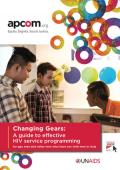
Resource | Guidelines,
APCOM has launched a new MSM framework guide for effective HIV service programming at the 21st International AIDS Conference’s MSM Pre-Conference, Action + Access: Rights and Demands of Gay and Bisexual Men in the HIV Response, hosted by MSMGF on July 16 in Durban, South Africa. "Changing Gears: a guide to effective HIV service programming for gay men and other men who have sex with men in Asia", as the new framework is titled, aims to strengthen the on-going national and regional efforts to revive the HIV response for gay and bi men and other men who have sex with men (MSM) in Asian countries. The guide was developed with technical assistance from UNAIDS Regional Support Team for Asia and the Pacific and serves as a resource to design or assess comprehensive HIV services for MSM in Asian cities, territories, regions or countries, incorporating recent innovations and the latest science on what works.

Resource | Presentations,
Objectives of the Framework
- Introduce the latest science and innovations in HIV service programming for MSM
- A source for advocacy with donors and policy makers
- Provide checklists to see the extent to which HIV service programming for MSM is up-to-date
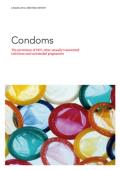
Resource | Publications,
Condoms are a highly effective and widely used method to prevent transmission of HIV and other sexually transmitted infections and unintended pregnancies.
A global consultation meeting was held in Geneva, Switzerland, from 6 to 7 November 2014, to reaffirm the critical role of male and female condoms as part of combination HIV prevention, to shape an agenda to scale up condom promotion and distribution, and to identify strategies to overcome bottlenecks in scaling up.
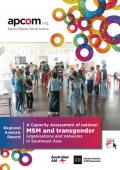
Resource | Publications,
The JumpStart Rap App was used to assess the organisational capacity of five MSM and transgender networks and organisations in Southeast Asia. The findings indicate capacity gaps in all 11 organisational and programmatic components of the Rap App, although the five organisations vary widely in their reach, capacity and technical support needs.





